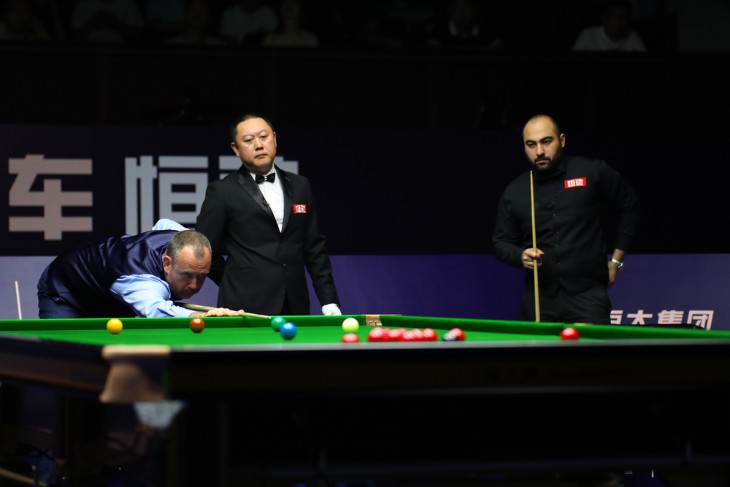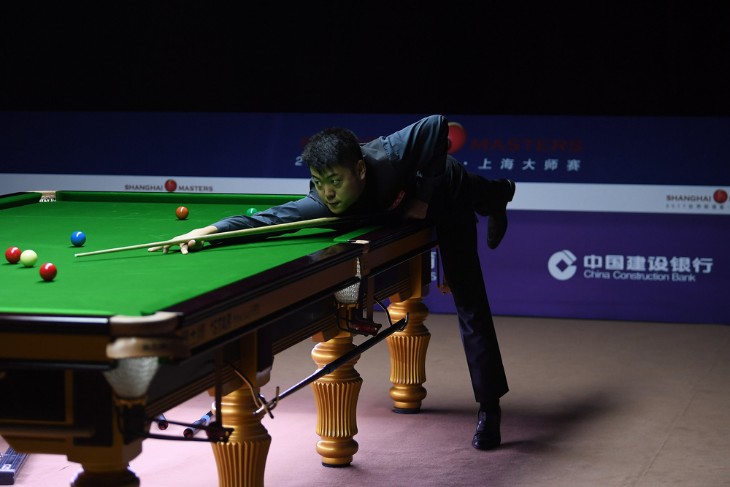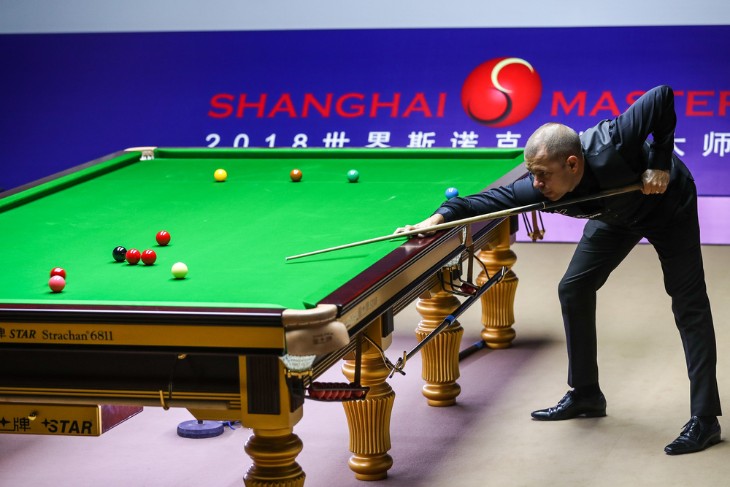- The Importance of Tactical Planning in Snooker
- Mastering Shot Selection: The Key to Dominance
- The Art of Safety Play in Snooker
- Psychological Warfare on the Snooker Table
- The Importance of Consistent Practice and Adaptability
- Developing a Strong Break-Building Technique
- Utilising Spin and Cue Ball Control
- The Significance of Fitness and Endurance
- Adapting to Opponents and Conditions
- Learning from Mistakes and Building Mental Resilience
- Final Verdict
Snooker, a game rich in skill and strategy, captivates fans worldwide with its unique blend of precision and mental acumen. The top players in the world of snooker employ a variety of strategies and tactics that set them apart.
Understanding these techniques not only enhances the appreciation of the game but also provides insights into the minds of these skilled athletes.
The Importance of Tactical Planning in Snooker
In snooker, thinking ahead is key. It's not just about the shot you're playing now, but also about setting up the next ones. Top snooker players are always planning. They think about how each shot will help them in the next few turns. This kind of planning is what makes them so good.
When a player looks at the table, they don’t just see the balls they can pot. They see a map. Each shot is a step on this map. They need to choose the best route. This means thinking about which balls to pot in what order. It's like a puzzle they need to solve.
Good tactical planning also means knowing when not to pot a ball. Sometimes, it's better to play a safety shot. This can make it hard for the other player to score. It's about making smart choices, not just showing off how well you can pot.
This planning is what separates the best players from the rest. It's not enough to be good at potting balls. You need to be smart too. You have to outthink your opponent. This is what makes snooker a really interesting game. It's not just about skill; it's about strategy.
Mastering Shot Selection: The Key to Dominance
Choosing the right shot in snooker is a big deal. Top players know this well. They look at the table and think hard about which shot to play. It's not always about going for the easy points. Sometimes, the best shot is the one that sets you up for the next big play or makes things tough for your opponent.
Good shot selection is about risk and reward. Top players can tell which shots are worth taking and which are too risky. They think about how each shot can help them stay in control of the game. It's like playing a game of chess on a snooker table.
For example, a player might see a chance to pot a ball. But they also think about where the cue ball will end up after that. They want to make sure they have a good shot next. If they don't, they might choose a different shot. This kind of thinking is what makes them so good.
Top players also use shot selection to put pressure on their opponents. They might play a shot that doesn't score points but leaves the other player in a tough spot. This can force the other player to make a mistake. Then, the top player can take advantage and score more points.
The Art of Safety Play in Snooker
Safety play in snooker is an art. It's about making it hard for the other player to score. Top players are good at this. They use safety shots to control the game. A good safety play can turn a match around.
When playing a safety shot, the goal is to put the cue ball in a spot that gives the opponent a tough time. You want to leave them with no easy shots. This might mean hiding the cue ball behind another ball. Or, it could be placing it far away from any easy targets.
Safety play is not just about defence. It's also a way to set up for your next turn. If you play a good safety shot, your opponent might make a mistake. Then, you can come back to the table with a better chance to score.
Top snooker players think of safe play as part of their strategy. They don't just do it when they have no other option. They plan it. Sometimes, they even use safety play more than aggressive shots. This is because they know how important it is to stay in control.
Playing a good safety shot needs a lot of skill. You have to be very precise with where you hit the cue ball. You also need to think about how hard to hit it. It's a tricky part of snooker, but it's very important.

Psychological Warfare on the Snooker Table
In snooker, it's not just about potting balls; it's also about mind games. Top players use psychological tactics to gain an edge over their opponents. They know that mental strength can make a big difference in the game.
One way they do this is through body language. They stay composed and confident, even when things aren't going well. This can put pressure on the opponent, making them doubt themselves. It's like a subtle form of intimidation.
Mind games are also part of it. Players might chat with each other during the match. They might make small talk or even crack a joke. This can break the opponent's focus and throw them off their game. It's all about keeping the mental pressure on.
Staying calm under pressure is another psychological skill. Snooker is a game of precision, and a single mistake can cost you the match. Top players train themselves to stay cool, even in high-pressure situations. They focus on the task at hand and don't let nerves get the best of them.
Sometimes, a player might take a break during a match. This isn't just for physical rest; it's also a mental reset. It gives them a chance to regroup and refocus. It can be a tactical move to disrupt the opponent's rhythm.
The Importance of Consistent Practice and Adaptability
Snooker is a game where consistency matters a lot. Top players know that practice is the key to success. They spend hours at the table, refining their techniques and improving their skills. Practice makes them sharper and more accurate.
But it's not just about practising the same shots over and over. Snooker tables can vary, and conditions change. This is where adaptability comes in. Top players can quickly adjust to different tables and environments. They know how to read the table and make the right decisions.
Consistent practice also helps players build muscle memory. This means that they can make shots almost automatically. They don't have to think too much about it. This frees up their minds to focus on strategy and tactics.
Adaptability is not just about the physical aspect; it's also about the mental side of the game. Players need to stay calm and composed, even when things don't go as planned. They adapt to the situation and make the best out of it.
In snooker, no two games are the same. Every opponent is different, and conditions can change. That's why top players practise consistently and stay adaptable. It's what keeps them at the top of their game.
Developing a Strong Break-Building Technique
Break-building is a crucial skill in snooker. It's about scoring as many points as possible in one turn. Top players are masters of break-building. They use precise cue control and positional play to keep the break going.
The key to a strong break-building technique is planning. Before making a shot, players think several steps ahead. They consider where the cue ball will end up after each shot. This forward-thinking approach is what sets them apart.
Positional play is also critical. Players need to put the cue ball in just the right spot for the next shot. This involves precise control of the cue ball's speed and direction. It's like a game of billiards within a game of snooker.
Sometimes, break-building requires potting difficult balls. Top players have the skills to pot balls that others might consider too risky. They weigh the risks and rewards carefully, always thinking about the next shot in the sequence.
A strong break-building technique is about efficiency. Players aim to clear the table while using the fewest number of shots possible. This requires accuracy and control, which they develop through hours of practice.
Utilising Spin and Cue Ball Control
Spin and cue ball control are powerful tools in a snooker player's arsenal. They can change the game's dynamics and give players an edge. Top snooker players know how to use spin to their advantage.
Spin, also known as English, is about making the cue ball spin as it hits other balls. This spin affects how the cue ball behaves after contact. Top players can apply top spin, back-spin, or side spin with precision.
For example, the top-spin makes the cue ball move forward after hitting another ball. Back-spin makes it come backwards. Side-spin makes it move to the side. By controlling the amount and direction of spin, players can position the cue ball for their next shot.
Spin is not just about potting balls; it's also a tool for safety play. Players can use spin to hide the cue ball behind other balls or make it travel to a safe spot on the table. It's a strategic element of the game.
Cue ball control is all about making the cue ball go where you want it to go. It's like having a GPS for the cue ball. Players must hit the cue ball at the right spot with the right amount of force to achieve the desired result.
Mastering spin and cue ball control takes practice. Players need to understand the physics of how spin affects the cue ball's movement. They also need to develop the touch and precision required to apply spin accurately.
The Significance of Fitness and Endurance
While snooker may not appear physically demanding, the significance of fitness and endurance in the game cannot be underestimated. Top snooker players understand the importance of being in good physical shape to maintain their mental sharpness and precision throughout long matches.
Snooker matches can last for several hours, and sometimes, even longer. This prolonged concentration and focus require players to be physically fit. Fatigue can lead to lapses in judgement and mistakes, which can be costly in the game.
Physical fitness supports mental resilience. When players are physically fit, they are better equipped to handle the mental pressure of high-stakes matches. They can stay calm and composed, even in tense situations.
Endurance is also crucial. Snooker requires players to maintain their form and precision over extended periods. A match can turn at any moment, and players must be prepared to seize opportunities when they arise. This requires mental and physical stamina.
While snooker is not a physically intense sport like football or basketball, it demands a different kind of endurance. Players often spend hours at the table, and maintaining focus and composure throughout is no small feat.

Adapting to Opponents and Conditions
In the world of snooker, adaptability is a valuable skill. It's not just about mastering the game; it's about adjusting to different opponents and playing conditions. Top snooker players understand that every match is unique, and they must adapt to succeed.
One aspect of adaptability is reading opponents. Different players have different styles and strengths. Top players study their opponents' games and adjust their strategies accordingly. They exploit weaknesses and avoid falling into their opponents' traps.
Adapting to conditions is also crucial. Snooker tables can vary in terms of speed and responsiveness. Some tables are faster, while others are slower. Top players quickly assess the table conditions and make necessary adjustments to their shots and cue ball control.
Sometimes, a player might be trailing in a match. In such situations, adaptability comes into play. They may change their approach, take more risks, or adopt a defensive strategy based on the match's context. Adaptability allows them to turn the tide in their favour.
Adaptability also extends to mental resilience. Snooker can be mentally taxing, and players must adapt to the ups and downs of a match. They stay focused and composed, even when facing adversity. This mental adaptability helps them stay in control of their game.
Learning from Mistakes and Building Mental Resilience
In the world of snooker, mistakes are inevitable. Even the top players make them. However, what sets them apart is their ability to learn from those mistakes and build mental resilience.
When a mistake is made, it's not the end of the world for a top snooker player. Instead, they view it as an opportunity to learn and improve. They analyse what went wrong, whether it was a misjudgment or a technical error, and make mental notes to avoid repeating it.
Mental resilience is the ability to bounce back from setbacks. In snooker, a missed shot or a lost frame can be mentally challenging. Top players have the mental strength to put those setbacks behind them and focus on the next shot or frame. They maintain their composure and stay in the game mentally.
Building mental resilience takes practice. Players often work with sports psychologists to develop techniques for staying mentally strong. These techniques may include deep breathing, visualisation, and positive self-talk.
Mental resilience also means not dwelling on the past. Whether it's a missed shot or a lost match, top snooker players do not let it affect their future performance. They can reset and approach each shot or match with a fresh mindset.
Final Verdict
The strategies and tactics used by top snooker players are complex and varied. They include tactical planning, shot selection, safety play, psychological tactics, break-building, spin and cue control, and adapting to different opponents and conditions.
These skills, combined with physical fitness, mental resilience, and a willingness to learn from mistakes, form the foundation of a top snooker player’s success. Understanding these elements of the game provides a deeper insight into the world of professional snooker, showcasing it as a sport of intricate skill and strategy.
For more information:











